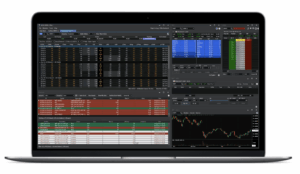For high-street lenders to increase lending in the call money market to avoid intermittent skews in rates, the central bank might have to tweak the timing for computing the Cash Reserve Ratio (CRR) requirement.
Banks have requested the Reserve Bank of India (RBI) to advance the cutoff time for CRR reporting from 11:59 pm to around 6 pm or 7 pm, sources aware of the development said. An earlier reporting window could prevent banks from parking a large portion of funds at the RBI’s Standing Deposit Facility (SDF) window as a precautionary measure amid 24×7 banking obligations, sources said.
In turn, this could free up funds for lending in the interbank call money market, balance out the skewed nature of liquidity distribution and help prevent sporadic volatility in the cost of funds depending on fluctuations in systemic liquidity.
“Banks want the CRR cut-off timing to be advanced. Under the current system, banks must maintain a satisfactory buffer until midnight to ensure that the reserve requirement is met,” a source said. “What is happening now is that a bank can be faced with a sudden outflow because of the pickup in 24×7 banking. So, banks are keeping a protective buffer at the SDF instead of deploying funds in the call market.”
An email to the RBI seeking comment was unanswered until press time. At present, the CRR is at 4.5% of net demand and time liabilities, a proxy for a bank’s deposits.
‘Complicated Issue’
The interbank call money market is an uncollateralised funding route used by banks to meet reserve requirements, among other financing needs. Fluctuations in this market affect the cost of funds in the broader economy.
At present, while the interbank call money market closes at 5 pm, transactions in collateralised money market routes such as tri-party repos and interbank repos end at least two hours earlier.
“The matter is a complicated one. One vertical of a bank may want an advanced CRR cutoff time, but another one, for instance, the currency management vertical, may face complications,” a source said.
“Moreover, based on their internal limits, some banks may not want to increase exposure to the uncollateralised call money market,” the source said.
Earlier this week, RBI Governor Shaktikanta Das urged banks to assess their actual liquidity requirements over the reserve maintenance cycle and to lend out surplus funds in the call market rather than passively deploy cash at the SDF at relatively less attractive rates.









